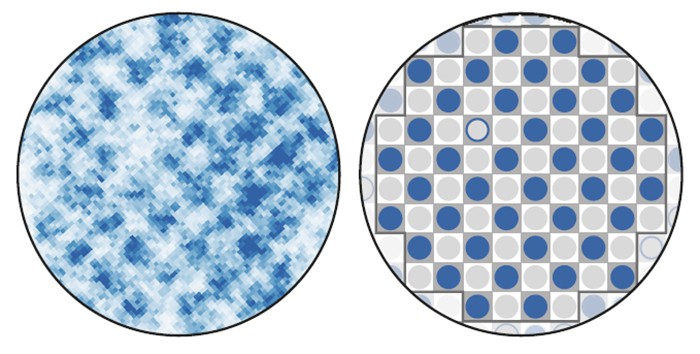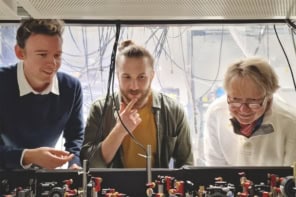
Homogeneous 2D Fermi gases have long fascinated theoretical physicists, but creating a real system to study in the laboratory had eluded researchers. Now, Klaus Hueck, Henning Moritz and colleagues at the University of Hamburg have created such a gas and also confirmed several theoretical predictions about its properties. Their work could lead to a wide range of new experiments that investigate the perplexing properties of quantum many-body systems including superconductors and superfluids.
Theoretical physicists have known for decades that creating and studying a 2D, ultracold gas of fermionic (half-integer spin) atoms would provide a wealth of information about quantum matter. In the past, experimentalists had to be content with trapping fermions inside a harmonic potential well, which allowed them to study its thermodynamic properties. However, the curved shape of a harmonic potential (which resembles a sloped valley) means that the gas inside is non-uniform — and this has important effects on the quantum properties of the gas.
Electron silo
In their study, Hueck and colleagues created a potential well that looks less like a valley and more like a grain silo. The physicists used optical dipole potentials to create the circular well, which simply repels quantum particles to keep them inside the trap. Crucially, the well has little influence on the density of the gas inside. This potential had already been used to contain gases of integer-spin particles (bosons) as well as 3D Fermi gases.

Ultracold atoms shed light on the Fermi-Hubbard model
Once they created their 2D gas, the team tested several theoretical predictions about its quantum properties. They measured its thermodynamic properties, which agreed with the theoretical calculations. The physicists also created matter waves in the gas and measured the momentum distribution of the fermions. For the first time, they directly observed how certain momentum states were blocked due to the Pauli exclusion principle – just as predicted by theory.
Trapping technique is described in Physical Review Letters and could prove invaluable for physicists studying the dynamics of uniform systems of fermionic particles, a task which has previously been notoriously difficult. Researchers can look forward to making further experimental observations of exotic theoretical ideas, and even make new discoveries for themselves.



